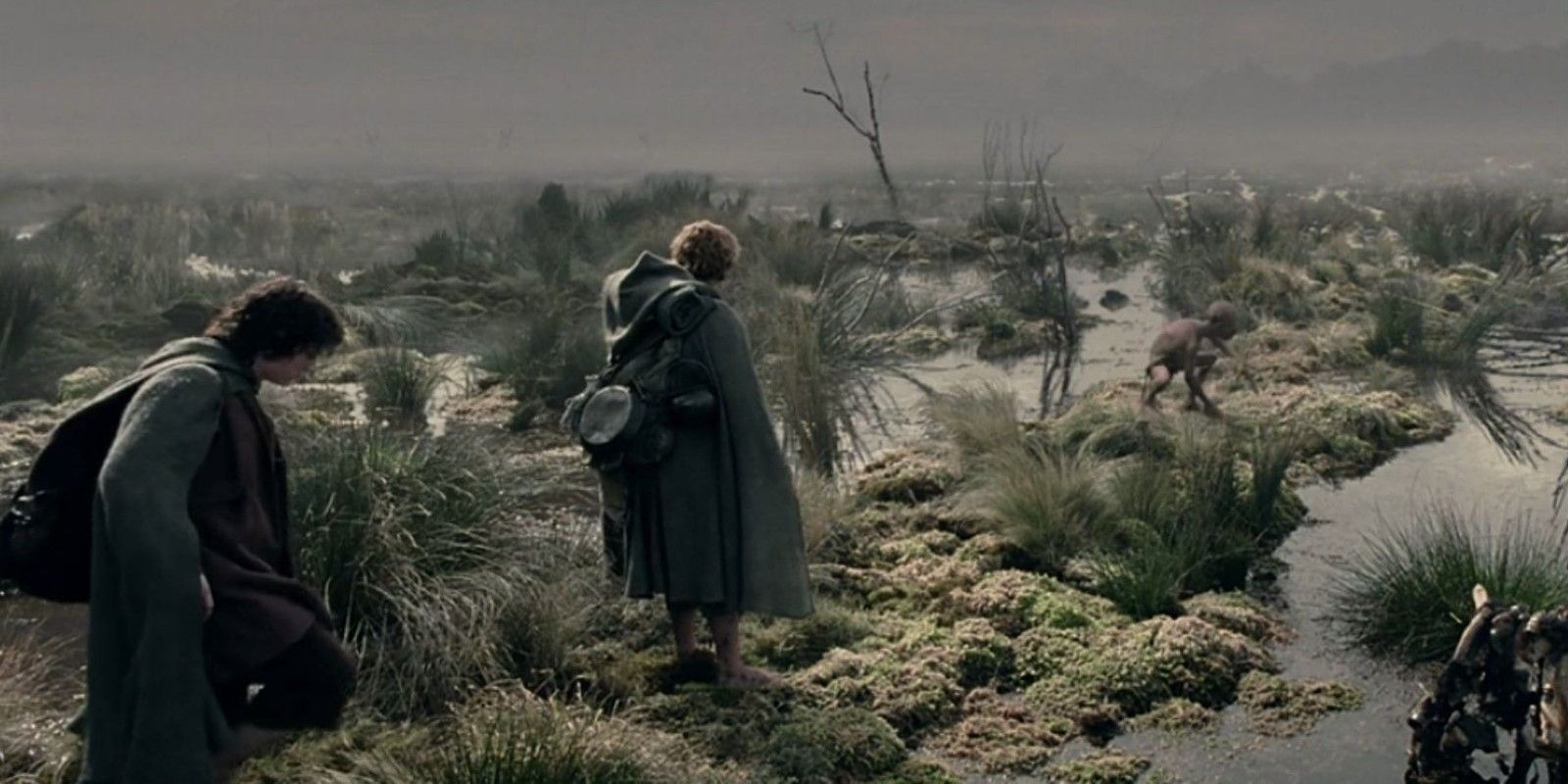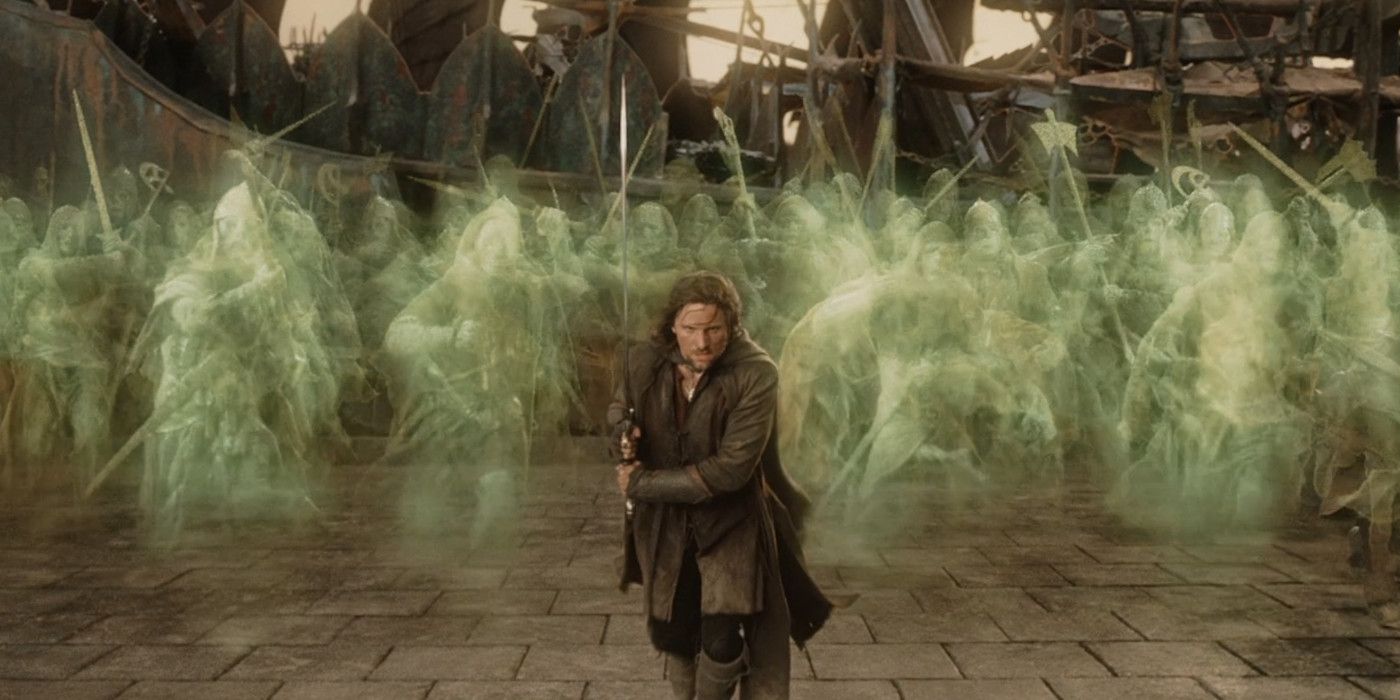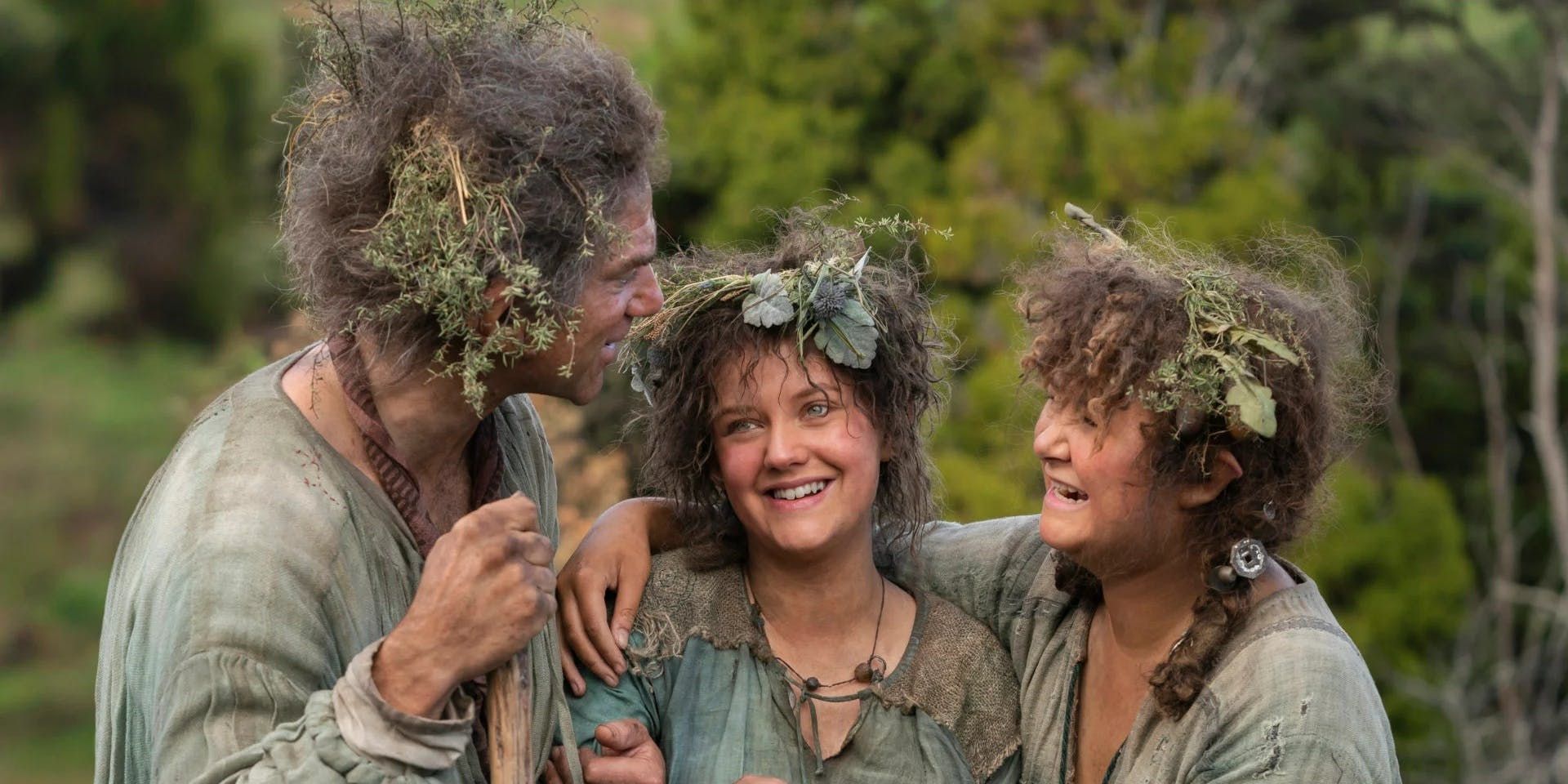In The Lord of the Rings, J.R.R. Tolkien immersed readers in a world rich with dark and mysterious landscapes haunted by the souls of lost warriors. While the tale of Aragorn’s quest to rally the Dead Men of Dunharrow stands out as a prominent example, that encounter with specters was not the Fellowship’s first brush with the supernatural. Along their journey toward Mordor, Frodo, Sam, and Gollum navigated a treacherous expanse known as the Dead Marshes.
Arguably one of Middle-earth’s most haunting locales, the Dead Marshes loomed ominously as a desolate and oppressive terrain. Peering into the murky waters, Frodo and Sam were confronted with haunting reflections of ashen faces. A chilling testament to the tragic history that haunted this marshland that, long ago, witnessed an ancient conflict of great magnitude. Who were the combatants in the fateful struggle, and what events led to the desolation that engulfed the land?
The Battle of Dagorlad Created the Dead Marshes
In the Second Age, a Horrific Battle Created a Dark Landmark
Throughout Middle-earth’s tumultuous history, the clash between the forces of light and darkness has yielded countless battles, each with its own significance and consequence. One such pivotal moment unfolded during the Second Age when the malevolent Sauron ascended to power. In S.A. 3434, the Last Alliance of Elves and Men assembled to confront Sauron and his legions’ burgeoning threat. This coalition converged upon the desolate plains of Dagorlad, where the fate of Middle-earth would be decided. For months, the Battle of Dagorlad raged, and the fields that later became known as the Dead Marshes bore witness to the conflict’s horrible toll. As the bodies of the fallen warriors littered the landscape, the once fertile plains were transformed into a desolate expanse haunted by the specters of the slain.
The battle’s climax unfolded as Sauron descended into the fray, his physical form poised in the middle of the chaos of war. Here, the pivotal moment foretold in the prologue of The Fellowship of the Ring transpired: the shattering of Sauron’s power as Isildur, son of Elendil, severed the One Ring from the Dark Lord’s finger. Though the Last Alliance emerged triumphant, the land of Dagorlad bore the indelible scars of conflict. The Dead Marshes, a haunting testament to the cost of war, served as a stark reminder of the sacrifices made in the struggle against darkness. Beneath the calm surface of its murky waters lie the silent guardians of history, awaiting those unsuspecting travelers who dared to tread upon its haunted shores.
The Real World Inspirations Behind the Dead Marshes
J.R.R. Tolkien Based the Dead Marshes on His Experiences in WWI

The real-world inspirations behind J.R.R. Tolkien’s iconic work, The Lord of the Rings, are profound and poignant. They draw heavily from the author’s own experiences in battle. Like many of his contemporaries, Tolkien was not exempt from the call of duty and enlisted during the First World War. Sent to the Western Front in 1916, he witnessed the horrors of conflict firsthand while serving as a signal officer during the carnage of the Battle of the Somme, where over a million lives were lost, including all but one of Tolkien’s closest friends. During his recovery in a Birmingham military hospital after the battle, Tolkien began to weave the threads of Middle-earth for the first time, penning what became known as The Book of Lost Tales. This served as the genesis for the rich tapestry of lore and legend that later found expression in The Lord of the Rings.
Among the many landscapes populating Tolkien’s fictional realm, the Dead Marshes stand out as a genuinely haunting reflection of the grim realities of war. In The Two Towers, Tolkien vividly portrays this eerie expanse by drawing upon his memories of the desolate landscapes of the Western Front. The parallels between the blasted wastelands of no man’s land and the spectral waters of the Dead Marshes are unmistakable. Moreover, the haunting image of fallen soldiers submerged in mud and water serves as a stark reminder of the atrocities that unfolded there. In his correspondence, Tolkien speculated on the origins of the Dead Marshes, acknowledging his wartime experiences’ profound influence on his creative vision. This decision infused his tale with a sense of authenticity and poignancy that resonates with readers today.
What Happened to the Dead Beneath the Water?
The Souls of the Dead Didn’t Depart Middle-earth

The unusual phenomenon of the Dead Marshes extends beyond preserving the fallen; it potentially harbors something far more sinister, the lingering spirits of the deceased. Unlike other battlefields in Middle-earth, the Dead Marshes remain eternally bound to their tragic past, defying the natural order of things. The question of why these souls are held in perpetual stasis within the marshland has puzzled scholars and fans of Tolkien’s work. While the author left this narrative aspect open to interpretation, intriguing precedents within his broader mythos offer potential insights into what’s happening.
One such notion posits that the souls trapped within the Dead Marshes may resemble what Tolkien called “Houseless” Elves. This is an Elf who, upon meeting their demise in battle, chose not to heed the call to depart for the Halls of Mandos in the Undying Lands. It is conceivable that those who fell upon the fields of Dagorlad, fueled by an unquenchable thirst for vengeance or driven by a sense of duty and sacrifice, forfeited their passage to the afterlife. Due to their steadfast refusal to depart, their souls became trapped within the spectral confines of the marshland, bound to the murky waters for all eternity. This interpretation aligns with Tolkien’s thematic exploration of the consequences of mortality and the allure of immortality, a recurring motif woven throughout much of the series. While the true nature of the Dead Marshes may remain a mystery, the haunting ghosts of the fallen serve as a solemn testament to the enduring legacy of those who gave their lives to defend Middle-earth.
The Souls In the Dead Marshes Have Power Over The Living
The Dead Marshes Can Draw Living Beings In… Never to Come Out








The mysterious flickering lights that dance amid the desolate expanse of the Dead Marshes have long captivated readers’ imaginations. Their enigmatic presence is a potent symbol of the fallen warriors’ lingering power. Described in Tolkien’s prose as “dimly shining smoke” or “misty flames flickering slowly above unseen candles,” these ethereal manifestations sparked a wealth of interpretation speculation. Some believe these lights to be the shimmering souls of the restless dead trapped beneath the surface of the stagnant waters. Others suggest a more folkloric explanation, likening these lights to the elusive Will o’ the Wisps of English lore, which are said to lure unsuspecting travelers off the beaten path and into perilous footing. This reading of the Dead Marshes’ supernatural ability is fair to posit, considering Gollum’s ominous warning in Peter Jackson’s adaptation of The Two Towers: “Don’t follow the lights.”
That being said, the legends surrounding these elusive apparitions have evolved. Throughout The Lord of the Rings, characters such as the Dead Men of Dunharrow are bound by oath or circumstance until they have completed their appointed tasks. Therefore, is it possible that these lights have a more benevolent use? Perhaps these elusive apparitions are meant to serve as a sort of guide, leading lost souls to safety and sanctuary. The purpose of the souls trapped within the Dead Marshes’ watery depths remains uncertain. Whether these lost warriors languish in eternal torment or long to find eventual release from their graves through service to others is a mystery that Tolkien leaves up to the imagination of his readers.
The Rings of Power Revisits the Dead Marshes
Fans Get to See the Grey Marshes Before the Battle of Dunharrow

The Lord of the Rings: The Rings of Power is set in the Second Age, depicting Middle-earth thousands of years before the events of the original trilogy and exploring what things looked like in the fantasy world before Sauron poisoned it with his darkness. In its early adventures, Rings of Power Season 1 visited the Dead Marshes long before they earned their name at the Battle of Dunharrow. Elanor Brandyfoot and her family of Harfoots trek through the marshes, then still known as the Grey Marshes, during their migration eastward in Episode 5. Then, the marshes are devoid of the horrific faces in the water that would eventually earn the location its chilling name.
The Rings of Power depicts several other locations from The Lord of the Rings before they fell into chaos and ruin. Among these is the Elven city of Eregion, which was ruled by Lord Celebrimbor in the Second Age of Middle-earth. Once a site of great intellect and craftsmanship, Eregion eventually fell during a battle with Sauron, who had infiltrated the city’s walls posing as the Elven lord of gifts, Annatar. The Dwarven kingdom of Khazad-dûm is also featured prominently in The Rings of Power. The series spends much of its time in Durin’s halls, showing the height of the Dwarves’ power before the Balrog brings everything crumbling down, as was seen in The Fellowship of the Ring. With further endeavors into the world before the wars against Sauron, The Rings of Power depicts tragic locations like the Dead Marshes, the ruins of Eregion, and the Mines of Moria in the days before their fall, perfectly setting up the desolation depicted in The Lord of the Rings.




